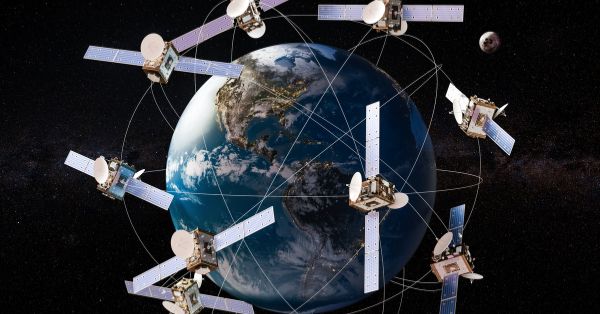Jio AirFiber Drives Growth Ahead of 2025 IPO
Reliance Jio is significantly scaling up its 5G-based fixed wireless access (FWA) service, Jio AirFiber, to strengthen its 5G monetisation strategy ahead of a potential initial public offering (IPO) by late 2025. With aggressive customer acquisition plans, Jio aims to onboard one million AirFiber customers every 30 days, a move that will boost its average revenue per user (ARPU) and elevate its valuation for the IPO.
The telecom giant’s focus on AirFiber reflects its ambition to monetise 5G investments faster and secure investor confidence for what could be India’s largest IPO. According to a CLSA report, this strategy is expected to fuel excitement among investors and enhance Jio’s market value as it prepares to go public.
Jio’s Aggressive AirFiber Growth Targets Explained
To meet its aggressive growth targets, Reliance Jio has expanded its distribution network and optimised the onboarding process for AirFiber customers. By September 2024, the company had 2.8 million AirFiber users, and analysts estimate an additional 1.9 million broadband customers were added in the December 2024 quarter. With plans to connect over one million homes monthly, Jio is positioning AirFiber as a key driver of its 5G strategy.
Why AirFiber’s High ARPU is Key to Jio’s Success
Jio AirFiber offers significantly higher revenue potential compared to mobile services, with an ARPU of ₹650–700 per month, over three times higher than the ₹195 ARPU recorded for mobile broadband in Q2FY25. This makes AirFiber a cornerstone of Jio’s 5G monetisation efforts, which have faced delays despite the company’s $25 billion investment in 5G spectrum and infrastructure.
The expansion of AirFiber’s high-ARPU user base is expected to accelerate revenue growth, while recent mobile broadband tariff hikes, introduced in July 2024, are likely to contribute to financial results by Q4FY25 and Q1FY26.
Jio’s Strategy to Accelerate 5G Monetisation
While Jio’s mobile broadband services form the foundation of its 5G strategy, monetisation has been slower than expected. To address this, the company raised the minimum plan price for its 5G services in mid-2024, requiring customers to upgrade to higher-value plans. However, analysts note that the full impact of these changes will take time to materialise.
By focusing on AirFiber, which delivers premium internet services, Jio is diversifying its revenue streams and tapping into segments with greater profit potential. CLSA predicts that Jio’s operating income (Ebitda) will grow by 40% to ₹87,600 crore by FY27, driven by ARPU growth and subscriber additions. By FY27, Jio’s ARPU is projected to rise to ₹230, up from ₹195 in Q2FY25.
Jio’s IPO: A Landmark Event for Indian Telecom
Global valuation firm Sanford C. Bernstein estimates that Jio Platforms Ltd (JPL), encompassing Reliance Jio’s telecom and digital businesses, is valued at $98 billion. Based on this valuation, Jio’s IPO could raise approximately ₹42,100 crore, making it the largest in Indian history.
Current regulations mandate that companies with a valuation exceeding ₹1 trillion must sell at least 5% of their stake during the IPO. For context, the largest IPO in India so far was Hyundai India’s ₹27,856 crore offering in 2023.
Reliance Industries, led by Mukesh Ambani, currently owns 66.5% of JPL. Strategic investors such as Meta and Google hold a combined 17.7% stake, while global private equity firms own another 16%. JPL raised ₹1.52 trillion from these investors in 2020, further highlighting its strong market position.
Jio’s Market Dominance and Revenue Projections
Sanford C. Bernstein projects a 17% compound annual growth rate (CAGR) in Jio’s revenue over the next three years, driven by a 14% ARPU growth by FY26. The brokerage also forecasts that Jio will capture 48% of industry revenue by FY26, further solidifying its market dominance.
The anticipated IPO is expected to be a landmark event in the Indian stock market, attracting global investor interest and setting a new benchmark for telecom and digital businesses in the country.
Jio’s $25B Commitment to 5G Leadership
Reliance Jio’s commitment to 5G infrastructure is evident in its $25 billion investment in spectrum and network expansion. The rollout of 5G services is not only reshaping India’s telecom landscape but also positioning Jio as a leader in the next generation of digital connectivity.
The company’s investments have also focused on high-value segments like enterprise solutions and smart homes, leveraging AirFiber to deliver cutting-edge services to residential and business users. This strategy aligns with global trends in telecom, where FWA is becoming a critical component of 5G monetisation.
What’s Next for Jio’s AirFiber and IPO Journey
While Jio’s AirFiber business has significant revenue potential, the company faces challenges in scaling operations and maintaining customer satisfaction in a competitive market. As Jio prepares for its IPO, its ability to meet ambitious growth targets and sustain high ARPU levels will be closely monitored by investors.
At the same time, the broader telecom market in India is undergoing rapid transformation, with increasing demand for 5G services, IoT connectivity, and enterprise solutions. Jio’s strategic investments in these areas position it well for future growth.
Jio’s Game-Changing IPO on the Horizon
Reliance Jio’s aggressive expansion of its AirFiber business is not just a revenue strategy but a calculated move to enhance its valuation ahead of its much-anticipated IPO. With a focus on high-ARPU services, subscriber growth, and 5G monetisation, Jio is setting the stage for a historic listing that could redefine the Indian telecom sector.
The company’s ability to innovate and scale rapidly, coupled with its strong market position, makes it a formidable player in the global telecom market. As Jio approaches its IPO, its success in executing its AirFiber strategy will be critical in shaping investor confidence and setting new benchmarks for the industry.

















